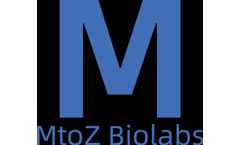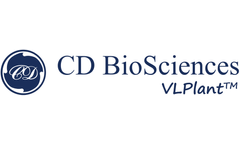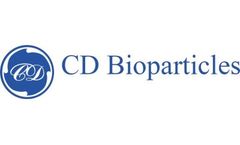Release Ptr Drug Articles & Analysis
64 articles found
Idiopathic pulmonary fibrosis (IPF) is a devasting lung disease characterized by progressive scarring of lung tissue. As fibrosis develops, patients experience worsening shortness of breath, reduced lung capacity and ultimately respiratory failure. Current therapies for IPF rely on oral administration of pirfenidone and nintedanib, two FDA-approved drugs that slow disease progression. While ...
In the pharmaceutical industry, excipients play a crucial role in the formulation of medicines. These inactive substances, which are combined with the active pharmaceutical ingredient (API), perform various functions that enhance the effectiveness, stability, and overall performance of drug products. Understanding the common types of excipients is essential for pharmaceutical scientists and ...
Whether it is medical research or drug manufacturing, tablet press is a vital link. Let's see how to choose the one that suits you best.Grand pack.The field of drug delivery is constantly evolving, driven by the core goal of improving therapeutic outcomes—enhancing efficacy, reducing toxicity, boosting patient compliance, and even enabling entirely new medical treatments. The global drug delivery ...
Hello, and welcome back to the Colorful Researcher’s blog. In our last blog, Peter discussed how AI is accelerating the drug discovery process and putting pressure on chemists, who must find ways of developing these potential drugs for subsequent testing or production. In his post, Peter explained how small instruments like BUCHI’s Glass Oven G-300 are great for working with small ...
ByBUCHI
Antibody-Drug Conjugates (ADCs) represent a groundbreaking advancement in targeted cancer therapy, combining the specificity of antibodies with the potency of cytotoxic drugs. The development and production of ADCs are complex processes that require a deep understanding of both biology and chemistry, alongside cutting-edge technology. This article delves into the intricacies of ADC development ...
The continuous advancement of biomaterials has led to the development of various copolymers, among which Poly(lactic-co-glycolic acid) (PLGA) and Polyethylene Glycol (PEG) copolymers have garnered significant attention. These materials are extensively utilized in drug delivery systems, tissue engineering, and regenerative medicine. This article presents a detailed comparison of PLGA and PEG ...
The evolution of 3D printing technology has opened up new avenues in the pharmaceutical industry, especially in the fabrication of novel drug delivery systems. One such advancement is the 3D printing of Oral Thin Films (OTFs), which are ultra-thin films used to deliver drugs via oral mucosa. Unlike traditional methods, 3D printing allows the precise layering of active pharmaceutical ingredients ...
Liposomes, spherical vesicles composed of one or more phospholipid bilayers, have garnered significant attention in the field of drug delivery due to their unique properties. These nanocarriers offer a promising approach to overcome challenges associated with traditional drug administration, enhancing therapeutic efficacy while minimizing side effects. This article will delve into the role of ...
Antibody-drug conjugates (ADCs) are a new class of drugs that combine the advantages of both antibodies and small molecule toxins. Compared with traditional cytotoxins, ADCs have the advantages of strong targeting, less toxic side effects, etc. They can accurately target tumor cells, reduce side effects, and improve the therapeutic effect.ADC drugs are mainly composed of monoclonal antibodies, ...
Introduction to Microsphere Microspheres are small spherical particles ranging from 1 to 1000 micrometers in size. They are widely used in the pharmaceutical and biotechnology industries for drug delivery, controlled release systems, and other applications due to their unique properties and versatility. Producing microspheres involves sophisticated technologies to ensure uniform size, shape, and ...
Since antibody-drug conjugates (ADCs) have the molecular characteristics of both small molecule and macromolecule therapeutic drugs, when choosing analytical methods, the typical ones used for both should all be considered. There are many different molecules in ADCs, and the difference between these molecules lies in the drug-to-antibody ratio (DAR) value and/or the site where the antibody binds ...
Dendrimers are highly branched polymers with a three-dimensional structure. They are characterized by expansive functional groups on their surface, which can be tailored to interact with specific molecules or to be used in a variety of applications. Dendrimers have attracted much attention in drug delivery, imaging, and materials science due to their unique structure, high monodispersity, and ...
Introduction In the ever-evolving landscape of drug delivery systems, nanoformulation stands out as a revolutionary approach. Nanoformulation leverages nanotechnology to create drug delivery systems that can improve the efficacy, reduce side effects, and precisely target disease sites. This cutting-edge technology has garnered significant attention from researchers and pharmaceutical companies ...
The field of pharmaceuticals has seen rapid advancements in drug delivery technologies in recent years, one of which is long-lasting controlled-release microspheres technology. This technology involves the use of microscopic particles to deliver drugs in a controlled and sustained manner over an extended period of time. By encapsulating drugs within these microspheres, pharmaceutical companies ...
Polymers play an important role in the biomedical field, and polyethylene glycol (PEG) and its derivatives are among the multifunctional polymers that have attracted much attention. PEG is a synthetic macromolecule with a linear structure consisting of glycol units (-CH2CH2O-) repeatedly linked. Its unique properties give PEG a wide range of applications. PEG is soluble in organic solvents and ...
SN38-BSA is a bioconjugate product that is effectively revolutionizing the field of drug delivery. This article focuses on understanding its makeup and how bioconjugation is instrumental in its function and efficacy. To begin with, SN38-BSA is composed of SN38, a potent anti-cancer drug, and BSA or Bovine Serum Albumin. SN38 is the active metabolite of the prodrug irinotecan, commonly used in ...
Poly(lactic-co-glycolic acid) (PLGA) is a functional polymer organic compound randomly polymerized by lactic acid (PLA) and glycolic acid (PGA). It has been approved by the U.S. Food and Drug Administration It is certified by the Food and Drug Administration (FDA) and is a copolymer material available on the market. PLGA has good biocompatibility, biodegradability, mechanical strength, good ...
Nanogels (NGs), namely nanoscale hydrogel particles, are three-dimensional network systems formed by physical or chemical cross-linking of polymers. Nanogels have received widespread attention in recent years due to their unique properties and potential applications in various fields such as drug delivery, tissue engineering, and diagnostics.Classification of NanogelsAccording to the phase change ...
In order to more effectively deliver chemotherapy drugs, Small Molecule Drug Conjugates (SMDC), Antibody Drug Conjugates (ADC), and Degradation Antibody Conjugates (DAC) have been successively explored and developed, enhancing the therapeutic index while providing selective delivery. What are their similarities and differences? What are their respective advantages? What is the current status of ...
Transdermal drug delivery system is a type of drug formulation that is absorbed into the body circulation through capillaries at a certain rate through the skin to produce drug effects. Transdermal drug delivery systems allow the drug to continuously diffuse through the skin, penetrate and absorb into the blood circulation, maintain stable blood concentrations for a long time, reduce the ...












